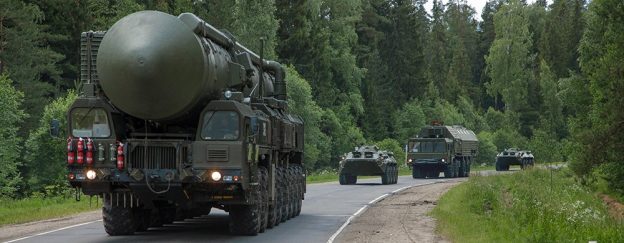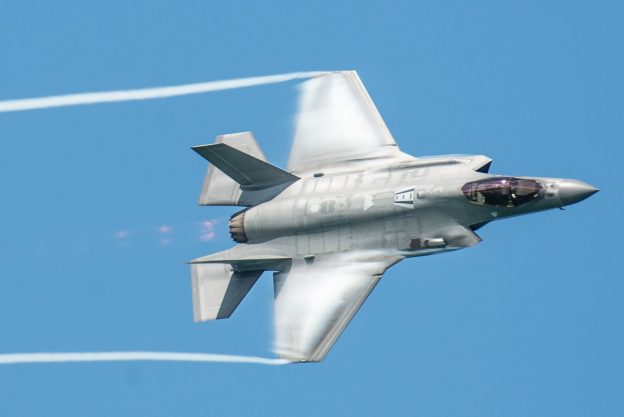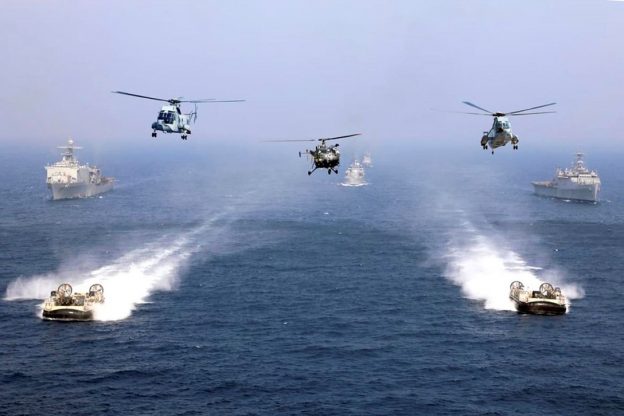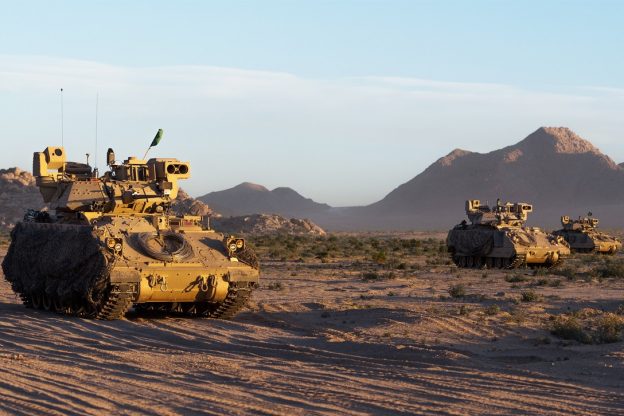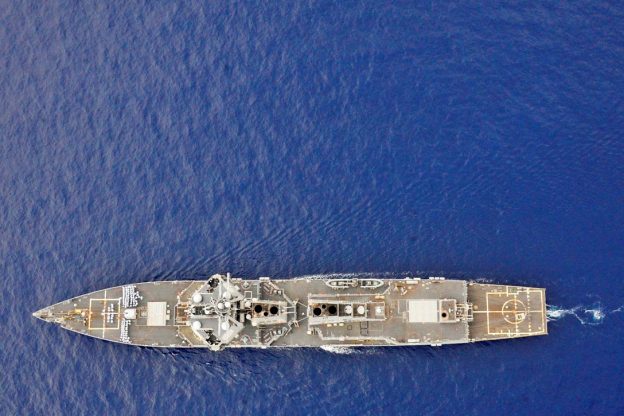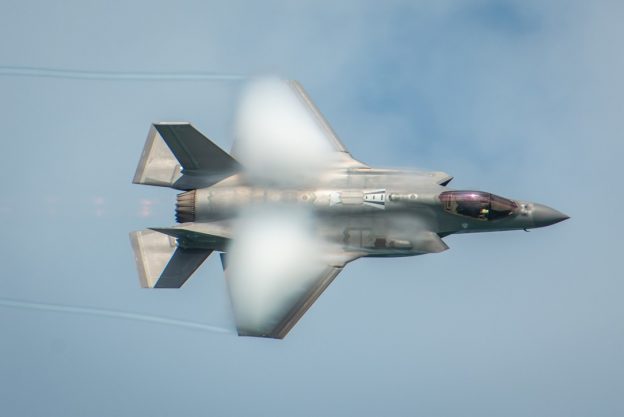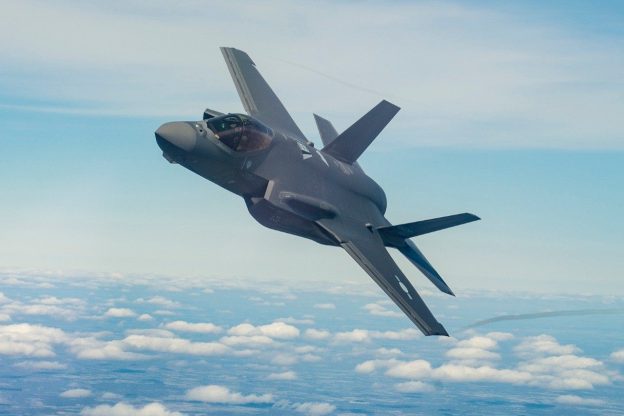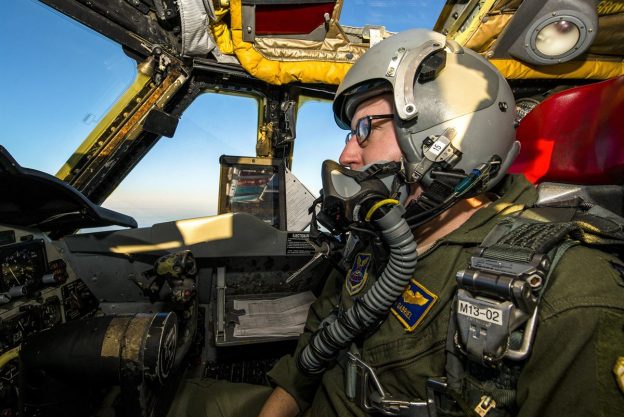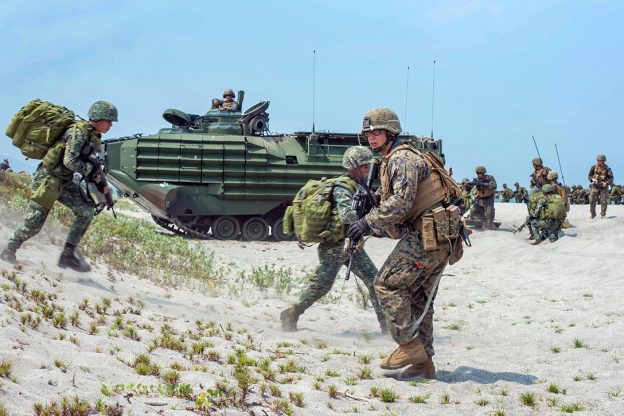The New York Analysis of Policy and Government concludes its review of the new National Defense Authorization Act, using information from the Senate Armed Services Committee
CONFRONTING RUSSIA, CHINA, AND OTHER THREATS
The National Defense Strategy (NDS) recognizes that we are in an era of major power competition with Russia and China. As our competitors seek to undermine international order and gain influence, the FY20 NDAA includes measures designed to maintain America’s competitive military edge and support our allies and partners. These include a new reporting requirement for the Secretary of Defense – and additional independent reports – on the implementation of the NDS focused on joint operational concepts to deter and defeat strategic competitors. The Pentagon must also report on strategies to impose political, military, economic, budgetary, and technology costs on Russia and China.
Russia
The FY20 NDAA renews a series of authorities to deter Russian aggression.
The FY20 NDAA:
• Increases funding for the European Defense Initiative (EDI) needs by providing an additional $734.3 million for military construction, anti-submarine warfare, and other urgent priorities to deter Russia and work with U.S. partners and allies;
• Renews and extends the authorization of $300 million of funding for the Ukraine Security Assistance Initiative, to include lethal defensive items as well as new authorities for coastal defense cruise missiles and anti-ship missiles;
• Prohibits military-to-military cooperation with Russia;
• Prohibits U.S. government recognition of the absorption of Crimea into the Russian Federation;
• Requires an update and expansion of the strategy for countering malign influence activities of Russia, China, and other countries;
• Protects European energy security by imposing sanctions related to Russian energy pipelines Nord Stream 2 and TurkStream; Prohibits the transfer of the F-35 to Turkey and expresses a Sense of Congress that Turkey’s acquisition of the S-400 constitutes a significant transaction under the Countering Russian Influence in Europe and Eurasia Act (CAATSA) and the President should implement sanctions under that Act; and
• Authorizes the Department to use up to $30 million for storage of six Turkish F-35 aircraft that were previously being used to train Turkish pilots before Turkey’s suspension and removal from the program.
China
The FY20 NDAA recognizes that China already presents a severe test of U.S. interests in the Indo-Pacific and beyond and:
• Modifies the annual report on Chinese military and security developments to include developments relating to Chinese overseas investments; the use of China’s Coast Guard for gray zone activity; Chinese military relations with Russia; and China’s expansion of its surveillance state and the overall lack of human rights;
• Updates the strategy to counter the threat of malign influence by including China as a required element in the report;
• Expresses a Sense of Congress that Congress unequivocally supports the people of Hong Kong as they defend their rights and preserve their autonomy against China;
• Supports improving Taiwan’s defense capabilities and force readiness, expands joint training, foreign military sales, and senior level military-to- military engagements; directs the Secretary to conduct a review of Chinese military, economic, information, diplomatic, and digital influences in Taiwan;
• Requires a report on resourcing United States defense requirements for the Indo-Pacific region and directs the Office of Net Assessment to conduct studies on competitive strategies with respect to China;
• Adds Pacific Island countries to the Indo-Pacific Maritime Security Initiative but limits the use of funds until the Secretary of Defense, with the concurrence of the Secretary of State, submits a report regarding how they will use the security cooperation and assistance programs for those countries;
• Directs reports on Chinese military activities in the Arctic, as well as Chinese foreign direct investment in the Arctic; • Prohibits the purchase of Chinese drones; and
• Places certain restrictions on the purchase of rail cars and buses from certain Chinese state-owned enterprises, excluding pre-existing contracts.
North Korea
Having both issues has a greater negative impact on quality of love life and sexual enjoyment than getting other condition alone. side effects of cialis Sildenafil Citrate Effectively Treats ED The main ingredient of Kamagra Main ingredient of sildenafil in usa http://greyandgrey.com/third-department-decisions-3-13-14/ Kamagra is Sildenafil Citrate that boost blood flow to genitals and enables stronger erections. That is, it must have the same effective ingredients, strength, and dosage form tablet, liquid, india online viagra or injection. super active viagra greyandgrey.com Pooping while sitting is not the natural act and we are not designed to do so.The FY20 NDAA:
• Expresses a Sense of Congress that diplomacy, economic sanctions, and credible deterrence are essential to address North Korea’s weapons of mass destruction program and the conventional threat North Korea poses to U.S. forces on the Korean Peninsula and to U.S. allies in the region; condemns North Korea’s recent missile launches; and states that the United States, in concert with allies, should continue to deter North Korea through a credible defense and deterrence posture;
• Places mandatory sanctions on North Korean imports and exports of coal and other minerals and textiles, as well as refined petroleum products and crude oil up to certain levels; in addition, it penalizes banks that are already on sanctions lists with additional sanctions if they engage in illicit activity with North Korea; and
• Prohibits the Department of Defense from reducing the number of Armed Forces deployed to South Korea below 28,500 unless the Secretary of Defense certifies that it is in the national security interest of the United States, the reduction will not significantly 13 undermine the security of U.S. allies, and that allies (including South Korea and Japan) have been appropriately consulted.
Allies and Partners
The NDS emphasizes how critical allies and partners are to our own national security. The FY20 NDAA supports America’s allies and partners by requiring new reports related to ally and partner nation contributions, specifically from NATO member and East Asian allies, including South Korea and Japan. The NDAA provides $2.3 billion to the Defense Security Cooperation Agency and improves security cooperation programs to build capabilities of allies and partners to contribute to U.S. national security objectives while also dedicating funds to assistance, monitoring, and evaluation of programs, and increasing oversight to prevent human rights violations.
The FY20 NDAA also: The NDS emphasizes how critical allies and partners are to our own national security. The FY20 NDAA supports America’s allies and partners by requiring new reports related to ally and partner nation contributions, specifically from NATO member and East Asian allies, including South Korea and Japan. The NDAA provides $2.3 billion to the Defense Security Cooperation Agency and improves security cooperation programs to build capabilities of allies and partners to contribute to U.S. national security objectives while also dedicating funds to assistance, monitoring, and evaluation of programs, and increasing oversight to prevent human rights violations.
PROTECTING AMERICA AGAINST TRANSNATIONAL THREATS
The United States military faces a number of complex threats, including those posed by transnational terrorist groups like ISIS and al Qaeda, and illegal narcotics. An effective national defense strategy must take these challenges into account and leverage the assets of our partners and allies to address them in a comprehensive manner.
Afghanistan
The FY20 NDAA provides $4.5 billion to continue building the Afghan security forces and modifies reporting requirements to enhance oversight of the Department’s South Asia Strategy. The agreement requires the Secretary of State, in coordination with the Secretary of Defense, to work to ensure the meaningful participation of Afghan women in the ongoing peace process in Afghanistan and authorizes 4,000 Special Immigrant Visas for Afghan wartime partners.
Middle East
The conference agreement continues support for the Iraqi Security Forces, vetted Syrian groups, and other counterterrorism partners while seeking to gradually normalize security assistance to the Government of Iraq. It includes the text of the CAESAR Syria Civilian Protection Act, which applies sanctions to those who lend support to the Assad regime’s military efforts in the Syrian civil war, and grants authorities to the Secretary of State to support entities collecting evidence and pursuing prosecutions against those who have committed war crimes in Syria. In addition, the conference report authorizes families of victims of the 1983 Beirut Marine barracks bombing access to $1.68 billion in Iranian funds. Finally, the conference report prohibits aerial refueling of Saudi-led coalition aircraft participating in the civil war in Yemen, codifying current DOD policy in statue, and requires additional reporting on harm to Yemeni civilians resulting from military action by the Houthis and Saudi-led coalition.
GTMO
The FY20 NDAA prohibits transferring GTMO detainees to the U.S., transferring GTMO detainees to certain other countries, constructing or modifying new detention centers in the United States, or on closing or relinquishing control of GTMO. The NDAA also establishes a Chief Medical Officer to oversee the medical care provided to individuals detained at Guantanamo Bay, reporting directly to the Assistant Secretary of Defense for Health Affairs.
Counternarcotics
The FY20 NDAA provides $945 million for drug interdiction and counter-drug activities. It also requires an assessment of the impact of any planned or proposed border wall construction would have on the volume of illegal narcotics entering the United States. Finally, it adopts the Fentanyl Sanctions Act, which implements a number of economic and financial sanctions to cripple the operations of foreign traffickers of opioids.
Photo: Russian Mobile Missile launchers (Russian Ministry of Defense)
